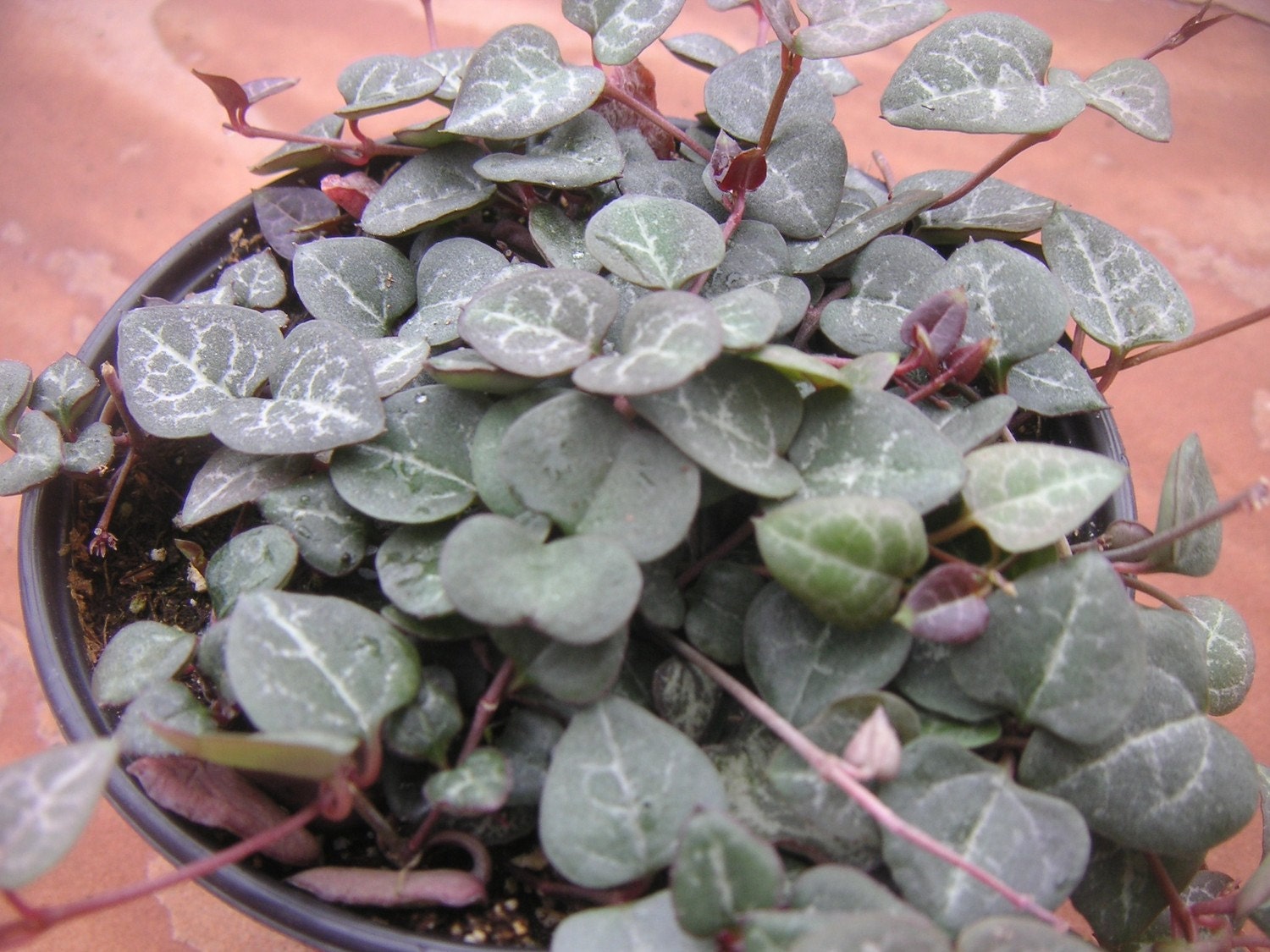
/StringofHeartsPlantLana_M-c51cb41f3dd34f3fab4e54aeb95b64f7.jpg)
One of the common houseplant watering mistakes is to water often and a little. Then, place the plant pot back on a drip saucer and put it in a bright location. To water a string of hearts, you should pour enough water in the pot until it drains out the bottom. As long as you allow the soil to dry between waterings, the plant will be healthy and grow fast. Deeply watering the roots ensures that the thick fleshy roots get enough moisture. The best way to water a sweetheart vine is to give the soil a thorough soak. In fact, string of hearts plants have more chances of dying from overwatering than underwatering. The plant’s tuberous roots store water and take a long time to dehydrate. There should be no moisture in the soil when you water a rosary vine. The best guide for watering a string of hearts is to test the soil for dryness. However, in winter, cut back watering to monthly or less. In summer, you may have to water the drought-tolerant plant weekly. Only water a chain of hearts plant when the soil has dried out. To care properly for your string of hearts plant, avoid overwatering it and only water when the soil has dried out Variegated String of Hearts ( Ceropegia woodii f. The thin, delicate leaves get easily tangled-so, the plant is also called hearts entangled.

As well as rosary vine, other names include bushman’s pipe, necklace vine, wine-glass vine, lantern flower, and parachute flower. String of hearts ( Ceropegia woodii) has a host of other common names. Very quickly, you will have a new plant with thin, pendulous wispy vines and dangling heart-shaped leaves. These small tubercles will take root if they touch the soil, making the delicate evergreen chain of hearts succulent extremely easy to propagate. Small tubers, looking like beads, also grow along the purple stems-hence the common name rosary vine. Over time, the tuber root can grow so large that it fills the pot. The tubers absorb and store water, making rosary vines somewhat resistant to drought. Most people grow string of hearts in hanging baskets as tender houseplants.Ĭeropegia woodii is a type of caudiciform plant-they have a tuberous root system. The fast-growing vining plants are native to South Africa and grow outdoors in USDA zones 10 and 11. String of hearts is a species of flowering plant in the genus Ceropegia.

String of hearts plant ( Ceropegia woodii) with flowers Chain of Hearts ( Ceropegia Woodii) Information Keep the rosary vines in temperatures between 70☏ and 85☏ (21☌ – 29☌). String of hearts doesn’t require misting. Grow a string of hearts in bright indirect sunlight, well-draining succulent potting mix, and water when the soil dries. Sweetheart vines are easy-care houseplants that require little maintenance. String of Hearts Plant ( Ceropegia Woodii) Care Overview String of heart plants are cool houseplants when their cascading stems hang straight down. Some string of heart cultivars have variegated leaves with silvery green leaves and cream and pink variegation. Other names for Ceropegia woodii include chain of hearts, rosary vine, and sweetheart vine.Īlthough the dark-green heart-shaped leaves are small, they develop fascinating silvery marbled patterns. String of heart vines can grow up to 13 feet (4 meters) long. String of hearts ( Ceropegia woodii) is a succulent plant with delicate purple trailing vines and heart-shaped leaves. Use a porous potting soil with coarse sand added when you repot this vine in early spring, making sure to provide adequate drainage.Email Pinterest Facebook Twitter Linkedin During the active growing period of spring and summer, the Rosary plant should be fed monthly with an all purpose liquid houseplant food diluted to half strength. Water thoroughly, and then allow the soil to completely dry out before watering again. This plant is somewhat succulent, so be careful to never overwater, or allow it to set in water. The Rosary Vine prefer summer temperatures around 70-75 degrees, but during the winter it should be kept in a cooler room if possible (60-65 degrees). (Full sun is ok, if some protection is provided during the hottest part of the day). They will reach two to four feet in length, so the plant should be hung or set on a pedestal where it will receive bright light for most of the day.

(not to say that you should neglect it.) The vines of the Rosary plant are like thin wires with marbled, heart shaped leaves. It can withstand neglect, dry air, or drought, and bounce back with a single watering. Cool plant, I like them a lot.The Rosary plant makes an excellent house plant due to it's durability. This plant is also known as Hearts entangled, or String of hearts.


 0 kommentar(er)
0 kommentar(er)
